Astro Bot interview: how Team Asobi built a future star from three decades of PlayStation gaming history
To the stars - and beyond!
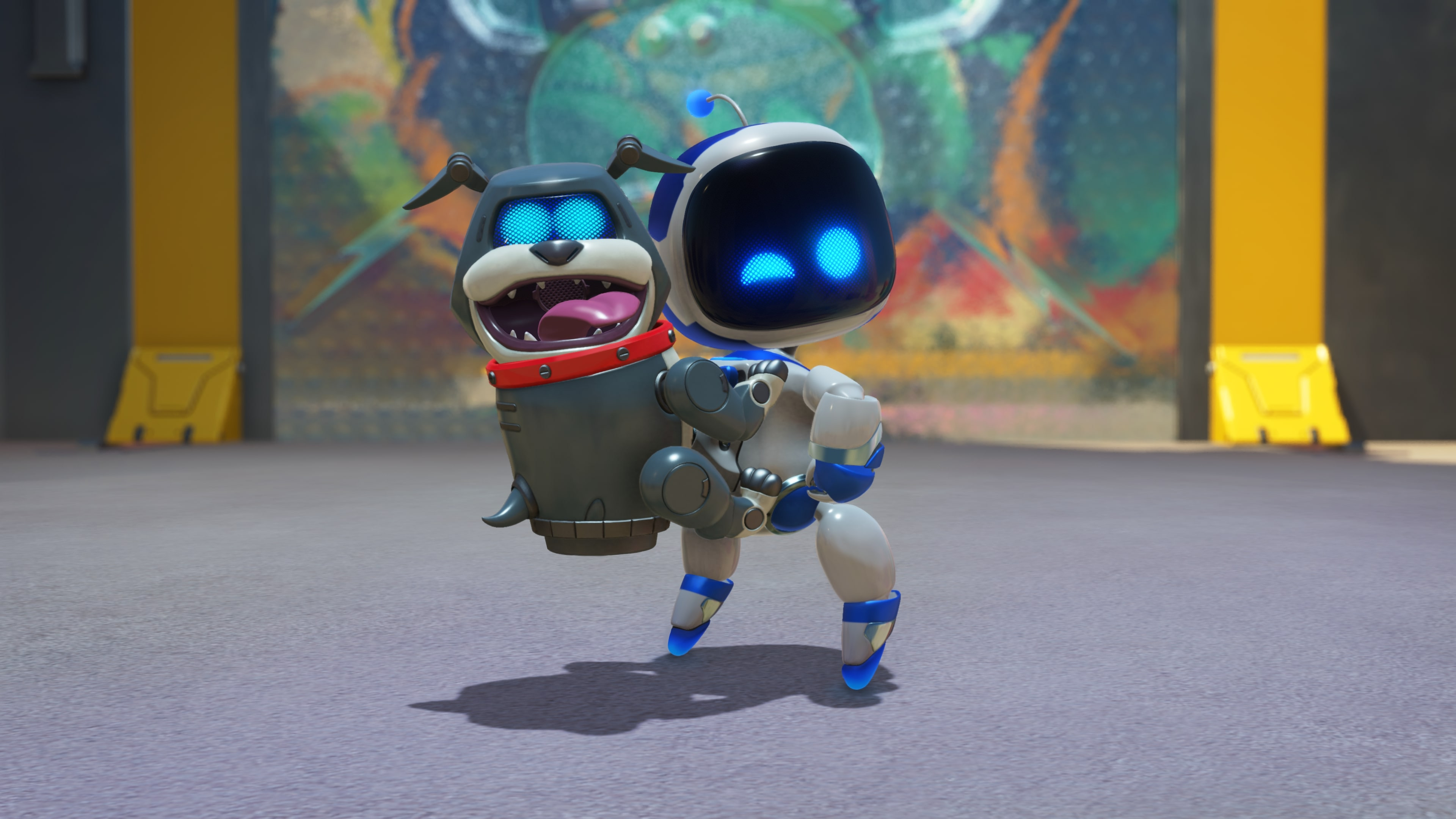
You don’t need a headful of gigabytes of memory to realize that platforming micro-robot Astro Bot was always destined for big things. The logo that adorns the cover of his self-titled new adventure, Astro Bot – which mirrors the design of 2018’s Astro Bot Rescue Mission – drops a galactic hint into where our titular hero is heading next in the Jupiter-style rings encircling one letter of his name. The promise of escapades beyond Earth is emblazoned in the sky: it doesn’t get any bigger than space.
This seems an entirely appropriate location for a video gaming icon who is just about to go interstellar. Despite his comparatively inauspicious origins as part of a series of augmented reality mini-games included on PlayStation 4 over a decade ago, Astro Bot is a digital character so wedded to the now he is able to complete his journey to the cosmos in the intro cut-scene of this title by piloting a Star Destroyer-sized PlayStation 5.
Spanning 80 levels, split across six galaxies and 50 planets, the new PS5 game takes the evident promise and widespread acclaim of 2020’s Astro's Playroom and sticks a rocket – and, in fact, many other thrill-seeking accessories – on the pint-sized hero’s back to deliver another dimension in 3D platform-based experiences. Made by Team Asobi, their creative director Nicolas Doucet says transporting this action-packed ecosystem beyond the stars really was roughly akin to one small step for the Tokyo-based studio.
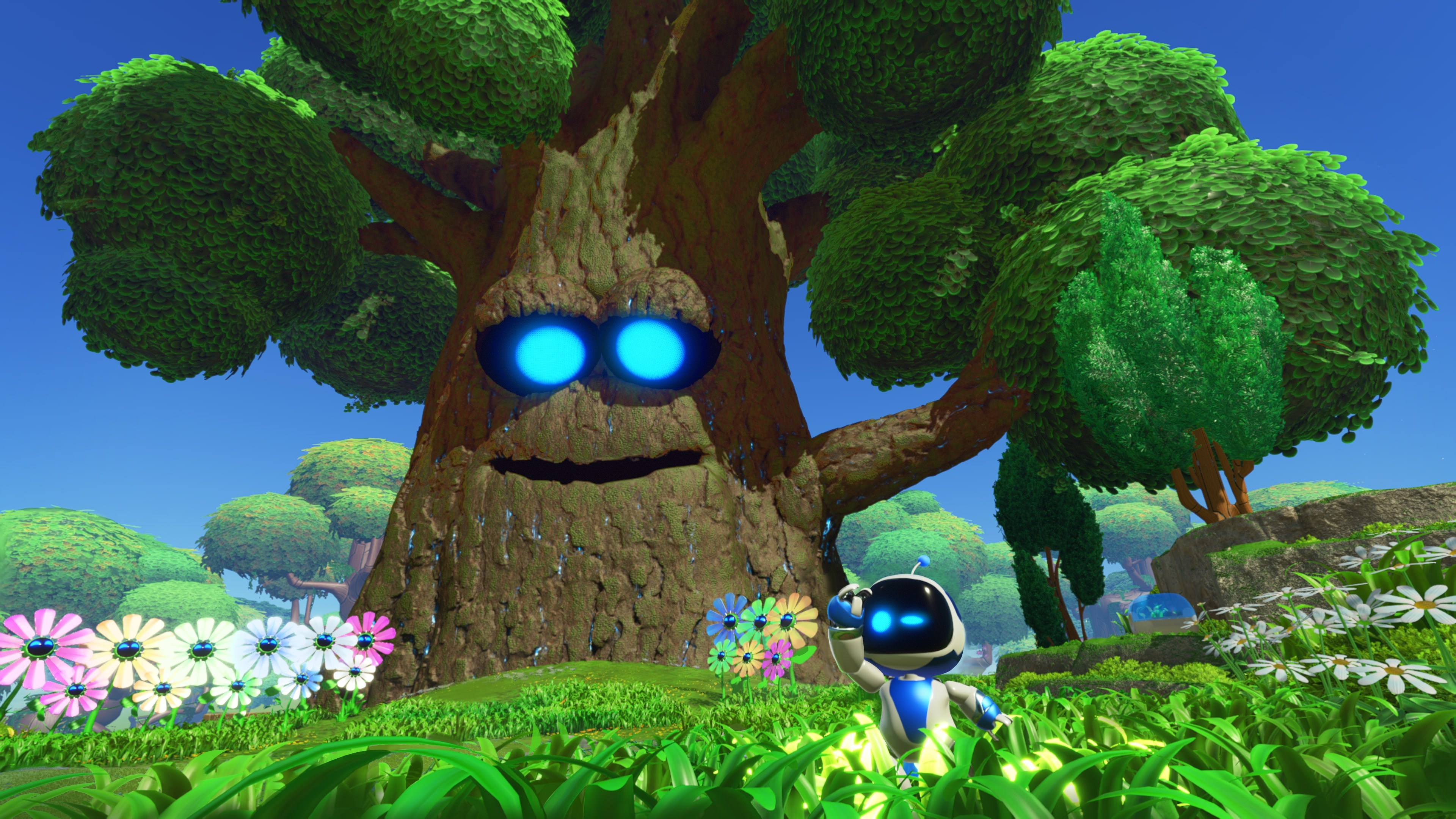
Robot rocks
“Astro's universe and identity in the design has always been infused by this kind of futuristic feel,” he tells us. “When I was a kid, it always felt like a Sony TV was special. There's that DNA in Sony products. When we were thinking about where Astro should go, space felt right. We didn’t overthink it. Space is a nice enough canvas so that it's very flexible and we can turn it into whatever we want. You put any planet in space and it can become a classic kind of platforming element, like ice, lava, or jungle, or a soap opera, Star Wars-type desert. Any pop culture item can fit in space because it’s extremely flexible.”
These “limitless” possibilities inform many of the other central components. Indeed, it says a lot about the playful ingenuity of its lead and the creative cunning of his makers that Astro Bot can keep both one eye on the future and one on the past. Because, as has been extensively trailed in the build-up to release, this is a game that has arrived to not only put down a marker for what’s achievable in this console generation but to also recline in the nostalgia being felt by PlayStation, which is currently celebrating its 30th year.
As part of his exuberant and irrepressible circumnavigation of the outer limits, Astro must not only reunite with 150 clones but also discover and rescue a similar number of cosplaying robots, trussed up in some often distinctive, sometimes baffling garbs spanning Sony’s three decades at the forefront of modern gaming. From Lara Croft to Kratos, Nathan Drake to PaRappa the Rapper, and Solid Snake to Crash Bandicoot, all must be uncovered within a vivid and vibrant collection of ceaselessly colorful interactive environments.
Doucet suggests that the references to PlayStation “heritage” that informed Astro Bot’s predecessor became a natural part of the development of this game when work began three-and-a-half years ago. Compiling the shortlist of participants was a collaborative effort spanning both the “obvious blockbusters” and the “deep cuts” in a rollcall of cast members intended to compel the global but regionalized consumer audience who have bought an estimated 500 million consoles during the lifespan of the machine’s five iterations.
Get daily insight, inspiration and deals in your inbox
Sign up for breaking news, reviews, opinion, top tech deals, and more.
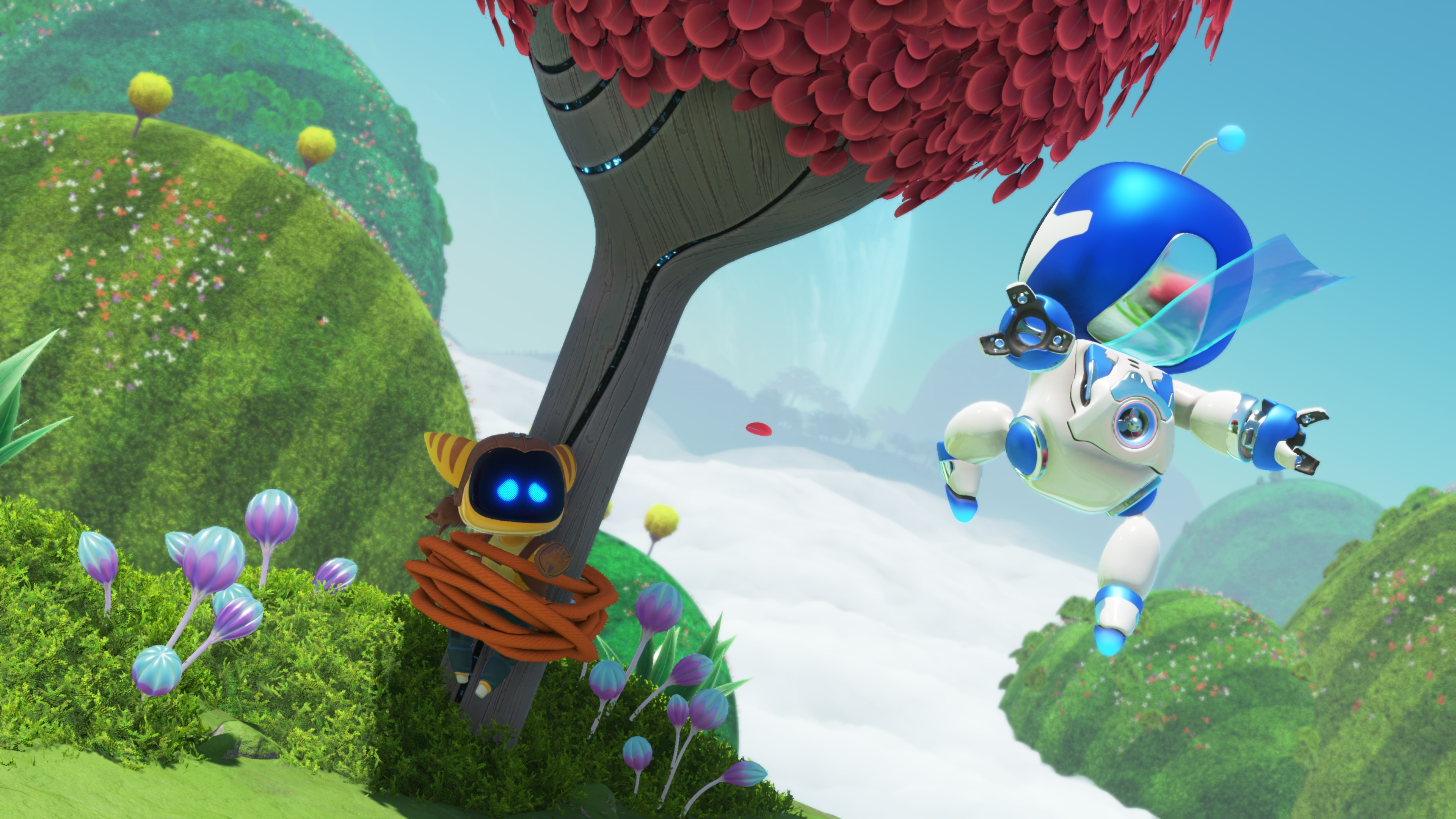
We could be heroes
Identifying Reiko Nagase from 1996’s Ridge Racer as the oldest and the unnamed feline star of 2022’s Stray as the newest, Doucet outlines how they managed to recruit this motley crew of reanimated androids. “We had to ask everybody: ‘Would you be willing to join the celebration?’ Almost the entirety of the characters we wanted to get in were agreed. If you asked me that question two years ago, I would have said we'd be lucky if half of them make the cut because people have different opinions, different agendas and you think we’d never get everybody to agree. But they did.
“That made me realize how much the teams were open about using the IPs [intellectual properties] and also how much they understood this is 30 years of working together. I hope we showed respect and were able to be truthful to those IPs because we have to crack jokes as well and cracking a joke about a very serious IP when it's not your IP is a difficult thing. It has to be the right amount of humor. It has to hit home,” he comments.
Doucet describes the timing of the new game as “a happy accident” rather than an ingenious marketing plan. He is also somewhat reticent when it comes to attempts to frame Astro Bot as PlayStation’s new hero, an emblem for future generations that can stand toe-to-toe with gaming figures like Sonic the Hedgehog, who have gone on to earn a place in popular culture that transcends their origins and becomes internationally recognizable far beyond the confines of a device, be it a PS5 or Sega Mega Drive.
Which haptic innovations is Doucet particularly proud of? “The biggest one is the stuff around the physics and haptics working together."
“I came to realize something in recent weeks, especially when this question around mascots came up. This is not me playing humble but I was thinking about Mickey Mouse. I was thinking about the Marios and the Sonics and I think a mascot is something you don't decide upfront. This is something that grows on people and at some point, you turn around and realize that character has always been there in the good moments.
“It has to be up to the people to decide when they see Astro as their mascot, rather than for us to force it, which is why I'm holding back on using that word. However, raising Astro as one of the strong PlayStation characters next to the amazing IPs that we have? Yes, that's definitely our goal. That's our ambition. If we do that, we're representing generations and that would obviously be fantastic but it's for the people to decide,” says Doucet, who has worked across the entire Astro Bot timeline.
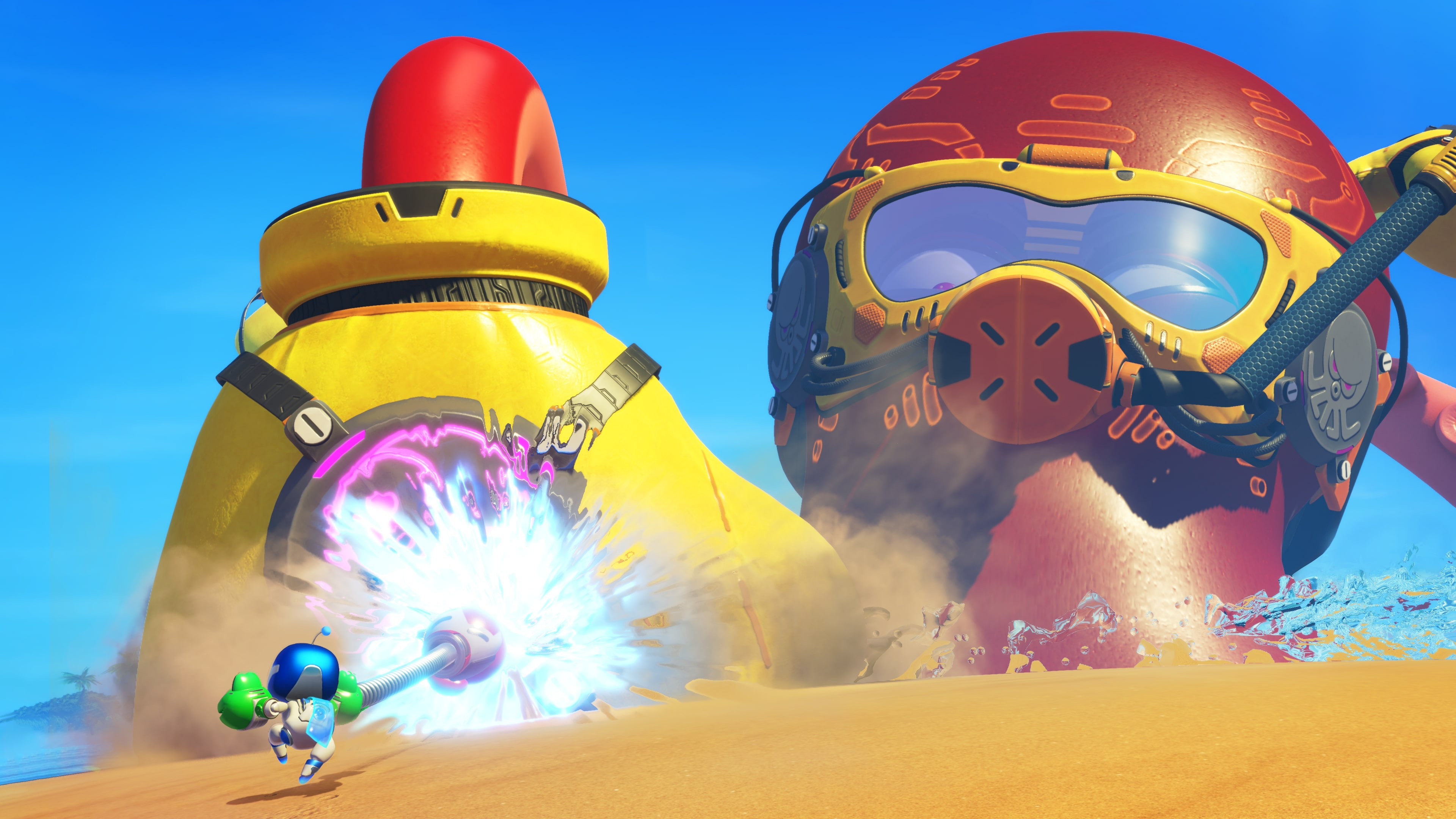
Breaking the fourth wall
The latest game dynamically represents the continued evolution of this little guy. Originally conceived as a comparatively simple prototype, albeit one that waddled like a nappy-wearing toddler, Astro now cheekily breaks the fourth wall with an array of humorous physical asides. To return to Sonic, we all remember seeing the pixelated whirling dervish tapping his foot impatiently during player downtime. By comparison, Astro will wave, look intently into the distance, scratch his head, yawn, sit down, fall asleep, and, eventually, whip out a Nintendo Switch-like console.
He is a more confident, knowing, and physically alive character, aided by an assortment of special powers that ensure hilarity is continuously being fed into the experience. In fact, every time you get a power-up – be it the augmentation of spring-loaded boxing gloves, a jet-propelled bulldog back-pack, or a sludge-sucking elephant – it feels like the coolest toy ever has been placed into your hands. Whether you’re 10, 25, or 50, gaming’s greatest possibilities – as arenas for pure slapstick fun – are realized in these moments.
Doucet accepts it’s hard to be funny in video games, particularly with titles that are intended to reach across borders, demographics, and cultures. As they seek to push the boundaries of Sony’s technological capabilities, the DualSense wireless controller’s haptic feedback has been proclaimed as arguably the best ever. This is richly deserved. The game’s sheer physicality – whether it’s dashing across breaking glass, skating on cracking ice, or punching King Kong’s teeth out – is built into Astro Bot’s every action.
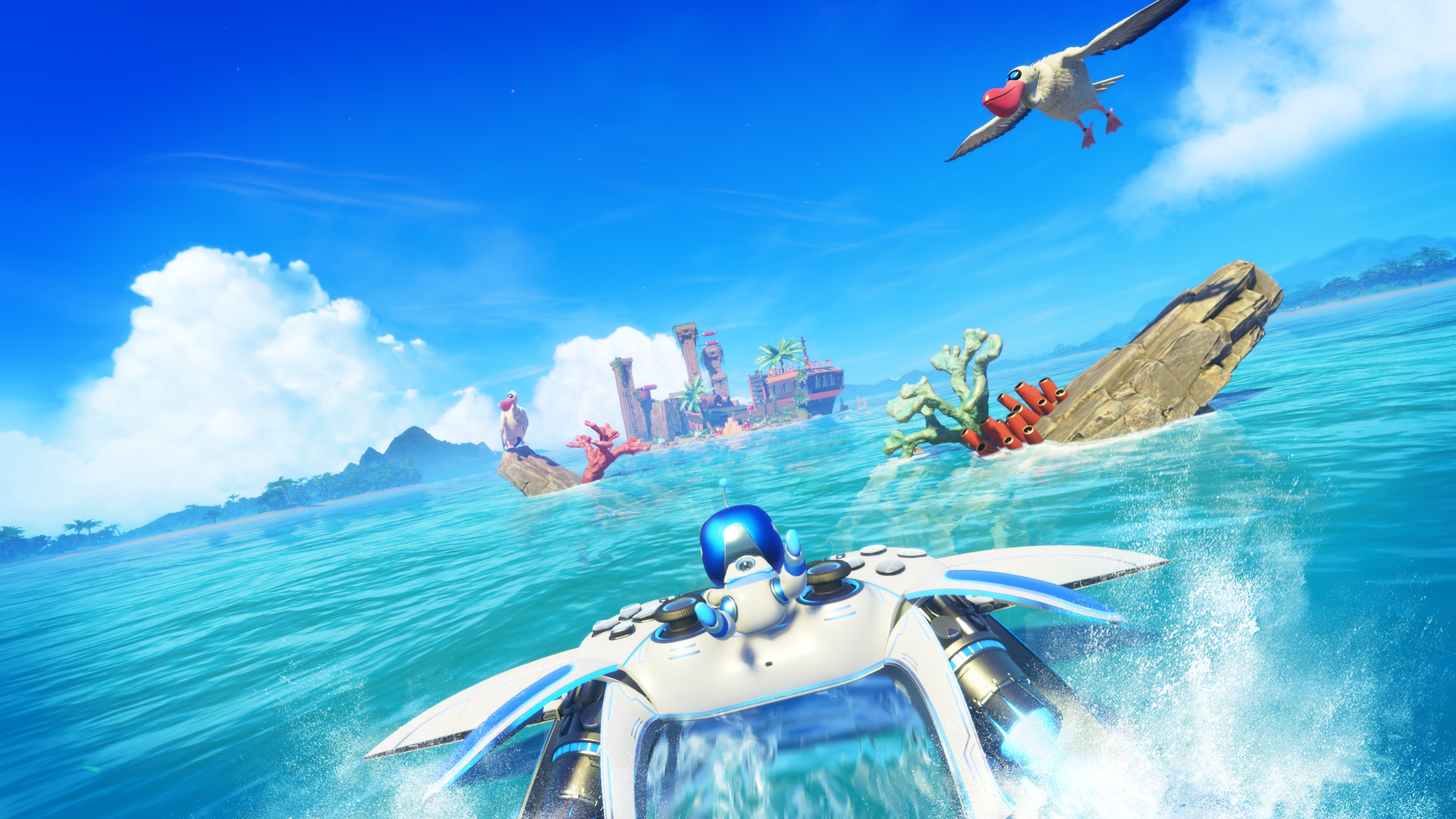
Astro physics
Which haptic innovations is Doucet particularly proud of? “The biggest one is the stuff around the physics and haptics working together. We really go to town with that. For example, with leaves, when you spin they go up and as you bump into them you can feel each individual leaf. Or with ice cubes, you can feel the material and with gold, you feel the hardness. But if it's feathers, you feel the softness. That combination of physics is where you need the PS5 horsepower to display all of that.”
In a recent interview, Doucet spoke of the responsibility associated with building a game that could be the first some kids ever play. He describes it as a “massive privilege” and one that informed Team Asobi’s dedicated approach to every facet of the design and gameplay. “Part of us is forever linked to these experiences. At a young age, when you get so absorbed into something so powerful and magical, it's a memory you keep for life. We get to do that too and it's something we take seriously.”
What does the future hold for this burgeoning franchise? There has already been confirmation of a free DLC (downloadable content), due later this year, focusing on the speed-running that featured in Astro's Playroom. Beyond that? “I honestly don't know,” says Doucet. “It could be a party game. It could be a sports game. It could be another space adventure. It could be something else. We have values about gameplay – the magic, the innovation, the playfulness – so as long as they are respected. Even if we made a horror game, it would be a funny horror game!”
Astro Bot is out now on PlayStation 5.
You might also like...
- Astro Bot has reminded me why I fell in love with the DualSense controller
- PS5 Pro: the latest on rumored specs, price, design, and release date speculation
- The best cheap PS5 DualSense controller deals in September 2024